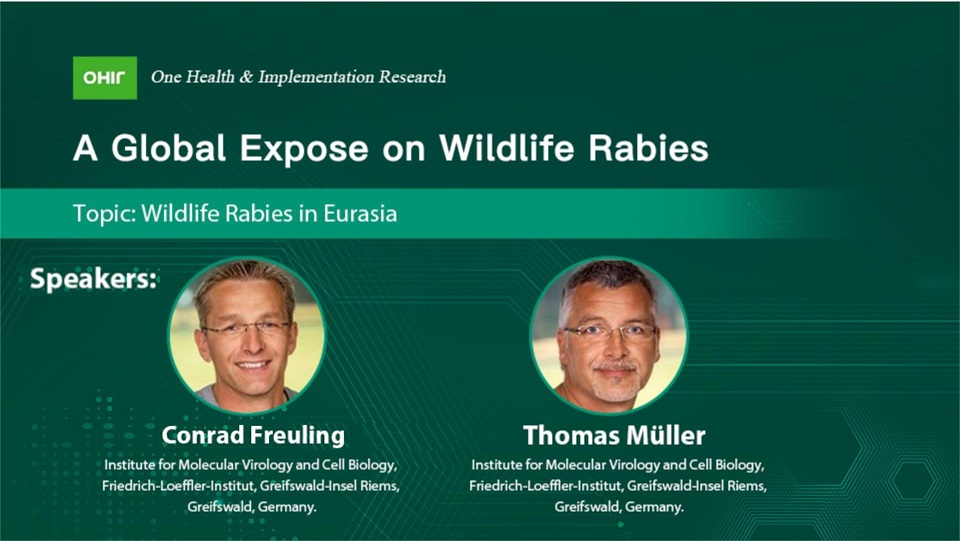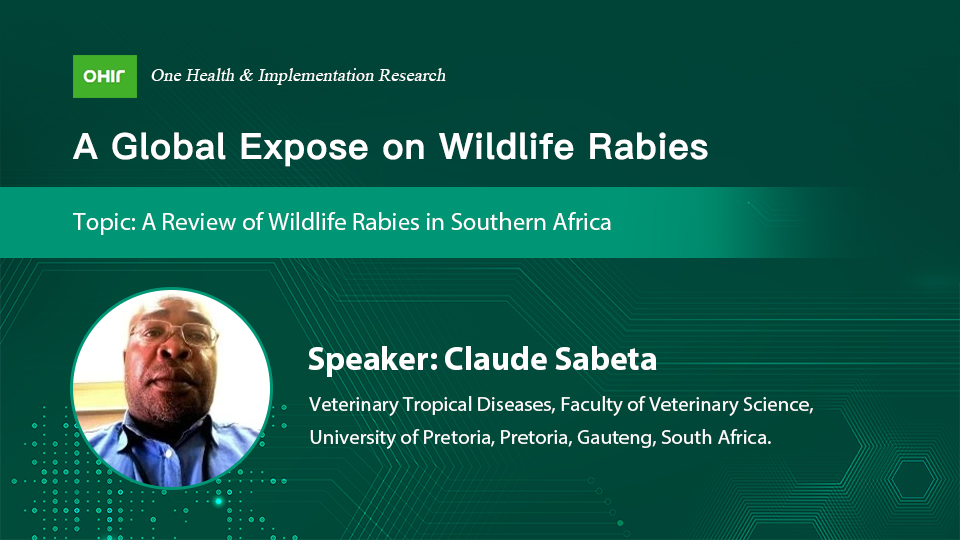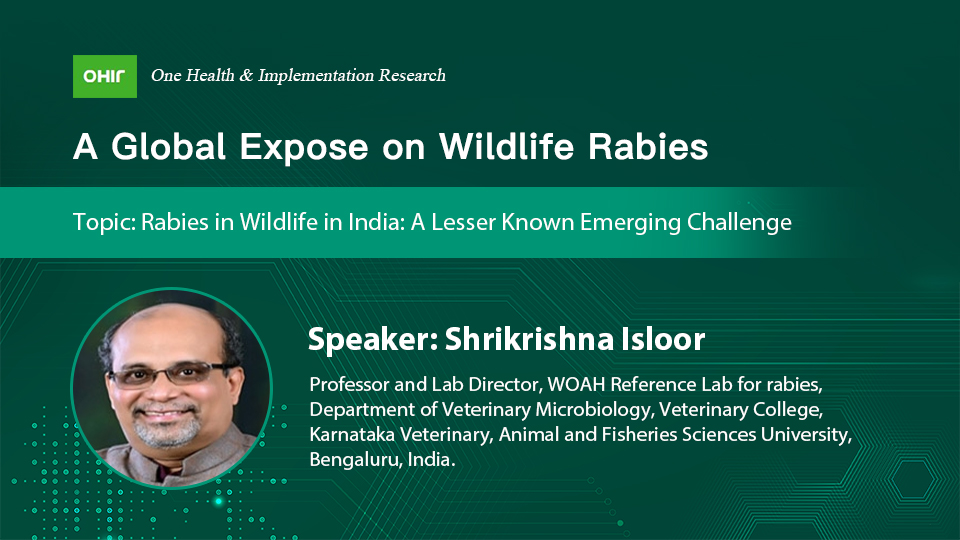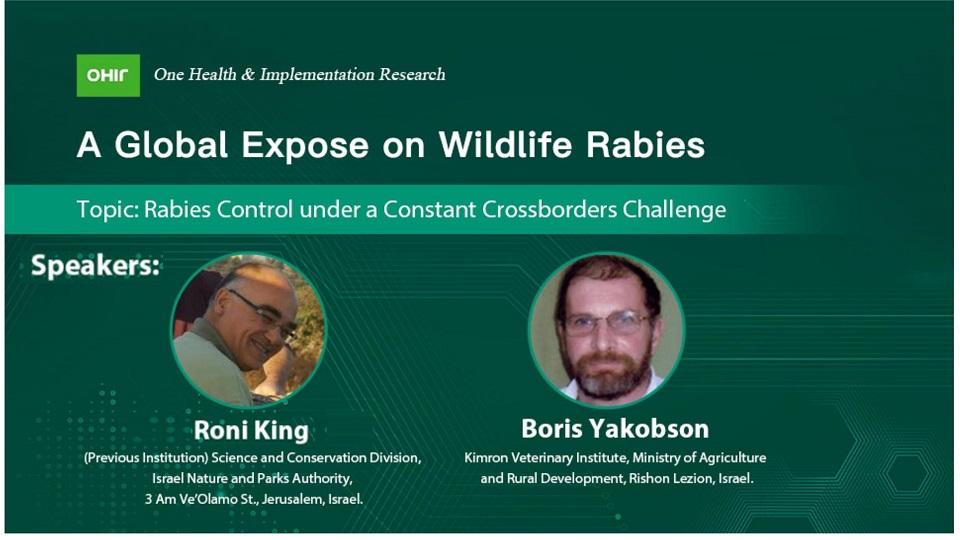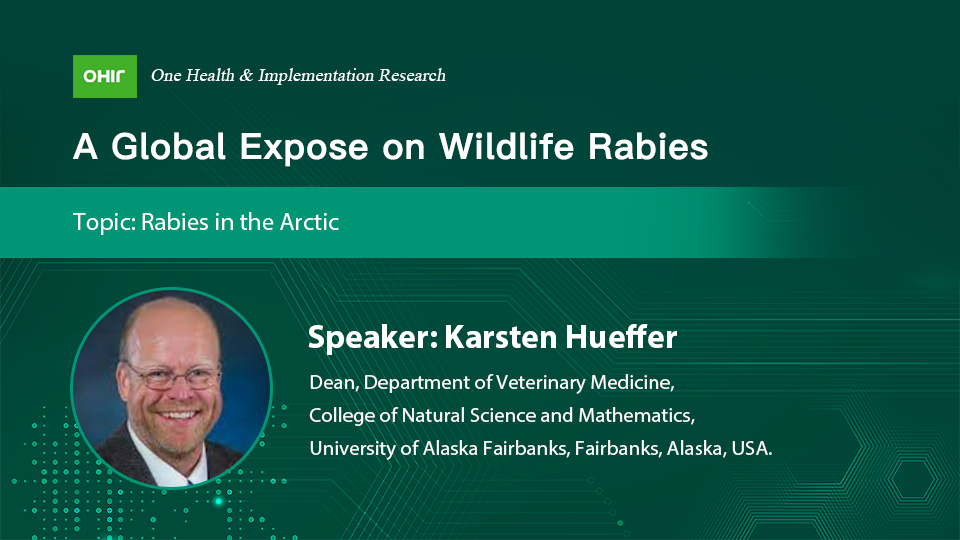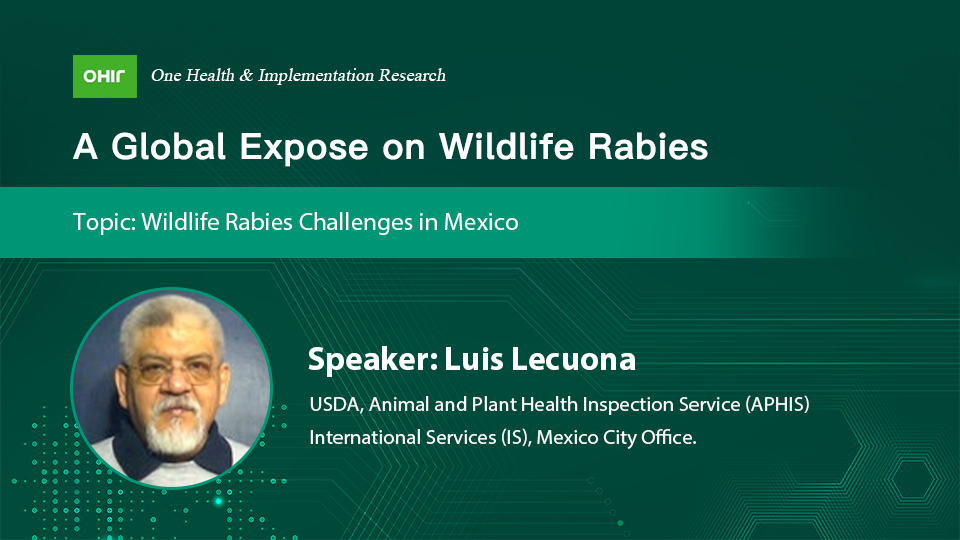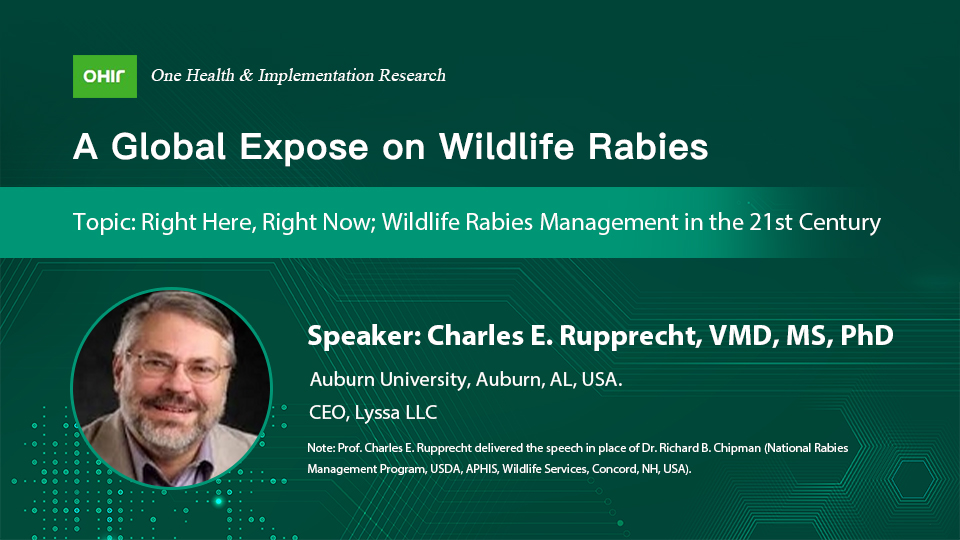Contents
Chair

Charles E. Rupprecht, VMD, MS, PhD
Auburn University, Auburn, AL, USA.
CEO, Lyssa LLC
Speaker(s)

Michael P. Ward
Sydney School of Veterinary Science, The University of Sydney, Camden, Australia.
Topic:The Potential Role Wild Dogs Might Play Should a Rabies Incursion Occur in Australia

Melville Brock Fenton
Emeritus Professor of Biology, Department of Biology, University of Western Ontario, London, Ontario, Canada.
Topic: Bats Bite Around

Alexander Vargas
Substitute General Coordinator of Zoonoses Surveillance, Health and Environment Surveillance Secretariat, Ministry of Health, Brazil.
Topic: Situation and Challenges of Sylvatic Rabies in Brazil

Richard B. Chipman
National Rabies Management Program, USDA, APHIS, Wildlife Services, Concord, NH, USA.
Topic: Right Here, Right Now; Wildlife Rabies Management in the 21st Century

Roni King
(Previous Institution) Science and Conservation Division, Israel Nature and Parks Authority, 3 Am Ve’Olamo St., Jerusalem, Israel.
Topic: Rabies Control under a Constant Crossborders Challenge

Boris Yakobson
Kimron Veterinary Institute, Ministry of Agriculture and Rural Development, Rishon Lezion, Israel.
Topic: Rabies Control under a Constant Crossborders Challenge

Janine F. R. Seetahal
Clinical Assistant Professor, Kansas State Veterinary Diagnostic Laboratory, Manhattan, Kansas, USA.
Topic: From Myths to Marvels: Tales of Vampire Bats

Luis Lecuona
USDA, Animal and Plant Health Inspection Service (APHIS) International Services (IS), Mexico City Office.
Topic: Wildlife Rabies Challenges in Mexico

Shrikrishna Isloor
Professor and Lab Director, WOAH Reference Lab for rabies, Department of Veterinary Microbiology, Veterinary College, Karnataka Veterinary, Animal and Fisheries Sciences University, Bengaluru, India.
Topic: Rabies in Wildlife in India: A Lesser Known Emerging Challenge

Claude Sabeta
Veterinary Tropical Diseases, Faculty of Veterinary Science, University of Pretoria, Pretoria, Gauteng, South Africa.
Topic: A Review of Wildlife Rabies in Southern Africa

Karsten Hueffer
Dean, Department of Veterinary Medicine, College of Natural Science and Mathematics, University of Alaska Fairbanks, Fairbanks, Alaska, USA.
Topic: Rabies in the Arctic

Conrad Freuling
Institute for Molecular Virology and Cell Biology, Friedrich-Loeffler-Institut, Greifswald-Insel Riems, Greifswald, Germany.
Topic: Wildlife Rabies in Eurasia

Thomas Müller
Institute for Molecular Virology and Cell Biology, Friedrich-Loeffler-Institut, Greifswald-Insel Riems, Greifswald, Germany.
Topic: Wildlife Rabies in Eurasia

Tore Buchanan
Wildlife Research and Monitoring Section, Ontario Ministry of Natural Resources and Forestry, Trent University, Peterborough, Canada.
Topic: Fox Rabies in Canada
Introduction
| Time (New York, UTC-4) | Speakers | Topic |
| 9:00-9:05 | Chair (Charles E. Rupprecht) | Welcoming Remarks |
| Session 1 | ||
| 9:05-9:20 | Michael P. Ward | The Potential Role Wild Dogs Might Play Should a Rabies Incursion Occur in Australia |
| 9:20-9:35 | Conrad Freuling &Thomas Müller | Wildlife Rabies in Eurasia |
| 9:35-9:50 | Melville Brock Fenton | Bats Bite Around |
| 9:50-10:05 | Claude Sabeta | A Review of Wildlife Rabies in Southern Africa |
| 10:05-10:15 | Free Discussion (Q&A) | |
| 10:15-10:25 | Break | |
| Session 2 | ||
| 10:25-10:40 | Charles E. Rupprecht | Right Here, Right Now; Wildlife Rabies Management in the 21st Century |
| 10:40-10:55 | Shrikrishna Isloor | Rabies in Wildlife in India: A Lesser Known Emerging Challenge |
| 10:55-11:10 | Janine F. R. Seetahal | From Myths to Marvels: Tales of Vampire Bats |
| 11:10-11:25 | Tore Buchanan | Fox Rabies in Canada |
| 11:25-11:35 | Free Discussion (Q&A) | |
| 11:35-11:45 | Break | |
| Session 3 | ||
| 11:45-12:00 | Boris Yakobson & Roni King | Rabies Control under a Constant Crossborders Challenge |
| 12:00-12:15 | Karsten Hueffer | Rabies in the Arctic |
| 12:15-12:30 | Luis Lecuona | Wildlife Rabies Challenges in Mexico |
| 12:30-12:45 | Alexander Vargas | Situation and Challenges of Sylvatic Rabies in Brazil |
| 12:45-12:55 | Free Discussion (Q&A) | |
| 12:55-13:00 | Chair (Charles E. Rupprecht) | Concluding remarks |
Relevant Special Topic(s)

Topic: Adopt One Health, Stop Rabies: Current Progress for Dog-mediated Rabies Elimination by 2030
https://ohirjournal.com/journal/special_detail/1078Moments














Presentation

